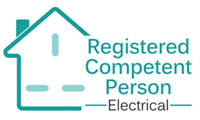Part P Regs
Part P is an amendment to the Government’s Building Regulations, effective from January 1st 2005.
The Part P requirement is that “Reasonable provision shall be made in the design and installation of electrical installations in order to protect persons operating, maintaining or altering the installations from fire or injury.”
In short, electrical installations must be safe! Part P applies to fixed electrical installations in dwellings (including gardens and shared amenities in blocks of flats) and affects many of the typical jobs undertaken by electrical contractors, particularly work carried out in kitchens and bathrooms.
Work affected by Part P is subject to notification to, and inspection by, building control bodies. However, calling in a building control officer takes time and costs money. The solution to this problem is self-certification.
Part P Competent Person Schemes like ELECSA were introduced at the same time as Part P to permit firms that have been assessed as sufficiently competent, to self-certify that their work complies with all applicable requirements of the Building Regulations.
Self-certification benefits the householder because by using a Competent Person they don’t have to pay building control fees or submit a building notice. In addition, householders have the important reassurance that by using a Competent Person, they are using a firm that has been independently assessed and certified as competent to carry out the work.
In addition, all authorised Competent Persons schemes are required to give the customers of their registered installer firms the opportunity to purchase an insurance-backed warranty against the risk that the work carried out does not comply with the Building Regulations.
For a firm, such as Sussex Electrics, that is registered with a competent person scheme such as ELECSA, the notification of work to Building Control is achieved through the scheme provider. Sussex Electrics provides the details of the work carried out to the scheme provider who then notifies the local Building Control department and issues a building compliance certificate to the householder.






